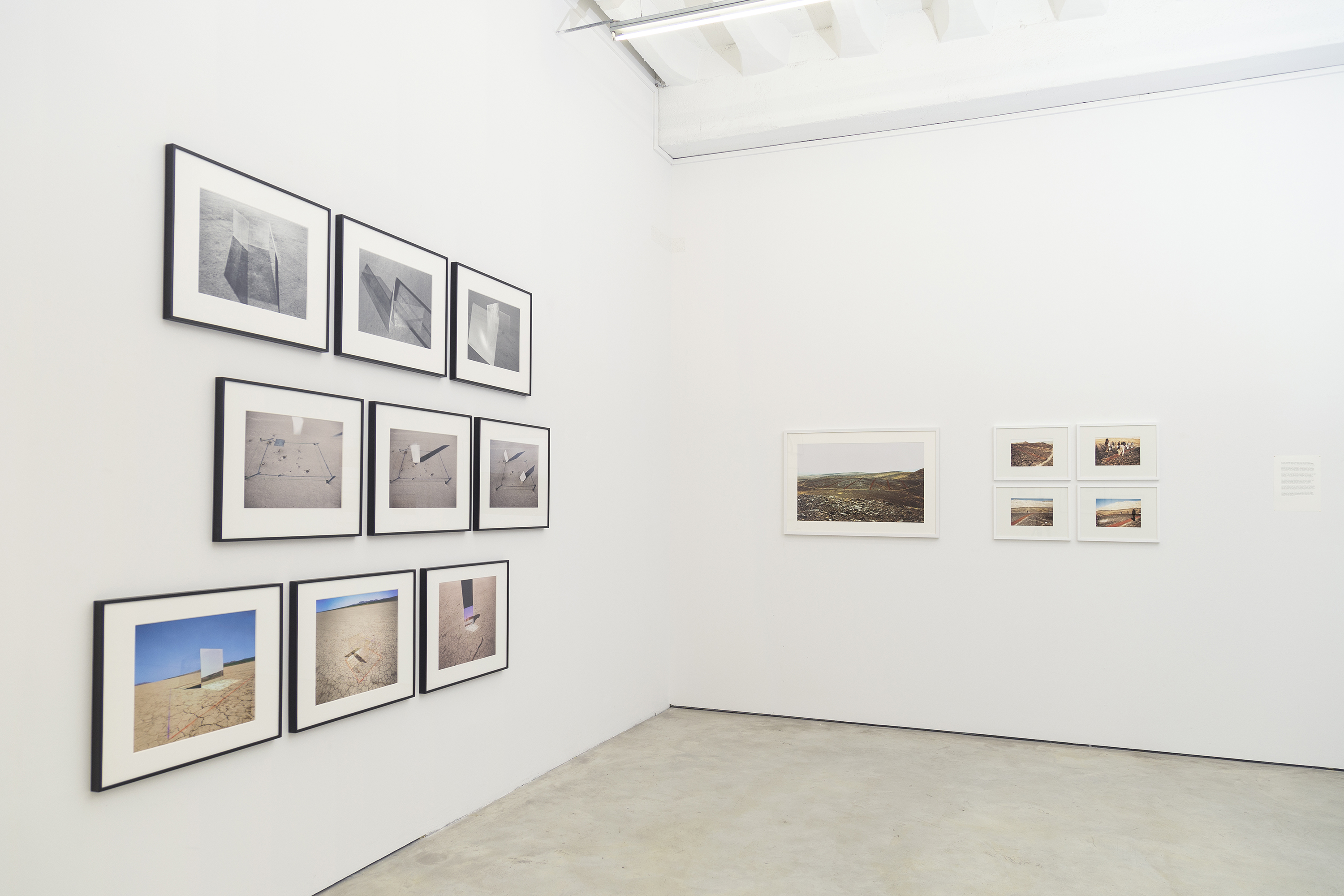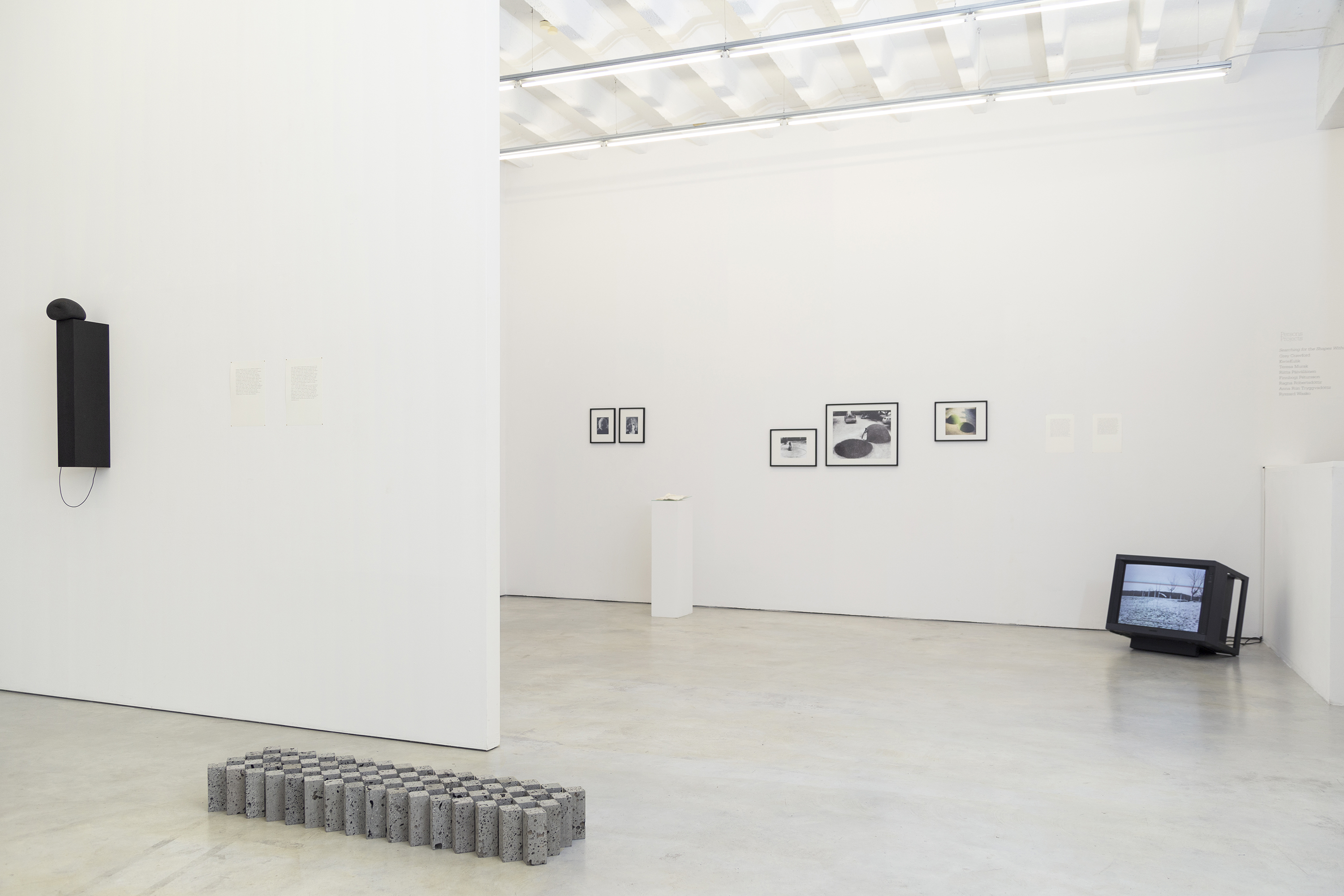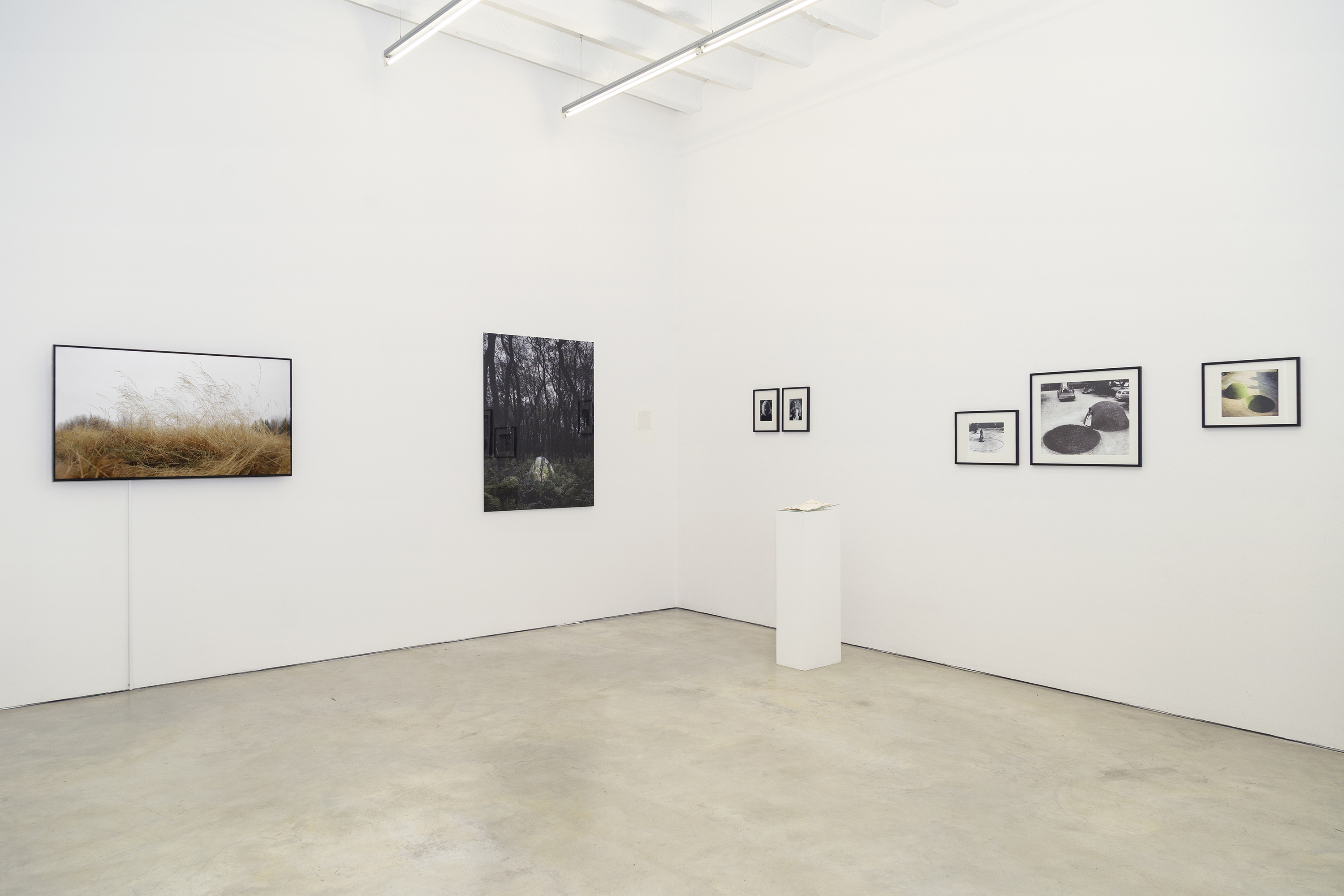GREY CRAWFORD
Grey Crawford is an American artist residing in Los Angeles, California. His photographic works from the 1970’s and early 1980’s have recently been discovered and represent some of the first experimentations with manipulating black and white and color photography. During this time period he also simultaneously, explored a series of performance enhanced works connected with Land Art.
These recently discovered works in this exhibition mark the first time they have ever been exhibited and establish Grey Crawford as one of the most unique artists to evolve out of Southern California from the 1970s. His El Mirage series created in the Mojave Desert represents a group of performance-enhanced photographic works from the mid-1970s that captures his very early experimental play. Crawford, utilizing steel and glass plates, one to be thrown into the air to randomly land within a designated space, the other as a building material for momentary structures.
"I started with metal shapes and I would throw them into the air and document their flight and how they would plunge into the ground. Then I would mark an area with either string or chalk and throw the plates in the air, hoping to land within the framework of his designated space. Metal has a permanence and integrity of its own. Realizing this and how it looked, I wanted to experiment with the opposite. I started using glass for building basic architectural structures to emphasize the contrasting qualities between the hard and sharp edges of metal with the soft transparent, visually arresting, ultimately breaking traits associated with glass.”
Using the vastness of the desert plane as his ultimate stage, Crawford uses the photographic process to record his multifaceted performances using both Black and White and color photography. These minimal performance-based constructions reflect Crawford’s fascination with exploring the possibilities that emerge through the photographic perspective of angle and view combined with light and time, motion sequencing, to create new architectural realities.
RYSZARD WASKO
Ryszard Wasko’s role as an artist cannot be separated from his role as a curator and organizer of some of the most important art events behind the Iron Curtain. As a member of Film Form Studio, Wasko concentrated on the conceptual analysis of the medium: he created videos, photographs, drawings and installations in which time, space, movement and perception were the main subjects. In 1995, Ryszard Wasko organized the 5th edition of Construction in Process, which took place in the Negev desert in Israel. The idea behind this event was to carry out the work on site, in the context of a given situation — social, political and economic. The main title of that edition was Design in Process, Co-existence. Its purpose was to support the peace process in the Middle East, more specifically, between Palestine and Israel. Wasko states, "The idea of my work came to my mind when I saw a huge natural crater cutting through the Negev desert. This crater was about 1 km deep and was enchanting to me because of its charm and scale. In order not to disturb its ‘pristine’ character, I decided to create a large, simple painting made out of sand and pigments which were left over from past eruptions. The painting was located on a hill inside the crater, with the dimensions of a football field, and pigments were brought from the bottom of the crater. Therefore, the entire process of creating a picture, despite the large number of participating artists, was time-consuming and lasted from dawn to noon. I titled this painting Seven Paths of Roses, because it was a metaphor for the planting of roses in my garden at home. An interesting aspect of this work is that the installation could not be seen in its entirety from the surface of the hill on which it was made. Its overall view could only be captured from the top, above the crater, from a height of approx. 700 meters. My intention was also that this sand painting would be destroyed by the sand storms that often occurred in the desert.”
KWIEKULIK
KwieKulik was an artistic duo consisting of Zofia Kulik and Przemysław Kwiek, who were active in this constellation between 1971 and 1987. Within the frame of this cooperation, they carried out actions and interventions, constructed installations and objects, worked with texts, films, slideshows and mail-art.
In December 1971, during an extended discussion between the students of sculpture from the Academy of Fine Arts in Warsaw, professor Oskar Hansen, and other contributors at the Close-Ups of the Young Creative Workshop in Elblag, a suggestion was put forward by Przemysław Kwiek, to move the discussion from the smoke-filled room into the open air, and replace verbal discussion by action collaboration with objects. Oskar Hansen then developed this idea, and introduced strict rules to the planned action (game). The participants divided into two groups: Whites and Blacks choose a hill where Henryk Morel’s sculpture Destruction was located. When one group performed a "movement”, the second group looked at this and had to respond after a time (the next movement was induced by the previous group’s movement). Zofia Kulik and Przemysław Kwiek found wooden sticks, a long white canvas and red fabric in the basement of the Culture House, which was then used in this interactive art game. Within three hours, fourteen movements had been constructed. This slideshow documents one of the first times this nonverbal group action was recorded.
TERESA MURAK
Teresa Murak is one of the principal pioneers of Performance, Land and Feminist Art in Poland. With her landscape pieces, Murak utilizes natural materials to create in her terms "organic architecture”. The concept and gesture of "sowing” — a spiritual and cosmic interpretation of the cultivation of seeds – defines Murak’s body of work and helped her in developing her own style of performative art that engaged with ritual processes.
A performative work Sculpture for the Earth was the first in Teresa Murak’s series of Equilibrium of Balance and is considered to be one of the first examples of Land Art in Europe. The work was created for an art symposium curated by Yoshio Nakajima and held in Swedish town Ubbeboda, in 1974. Teresa Murak designed a work based on geometric orders. She made a compass from a stick and a string and started by drawing two circles on the ground that had a radius of 162 cm, exactly the artist’s height. That became the basis for the diameter and depth. For thirty days, she dug out a half of a hole, using only a shovel and her hands as a means to dig and then remove the extracted dirt to form an adjoining mound. The installation took the form of two half-spheres shifted against each other — a depression and an elevation — with a total diameter of about four meters. Following its completion, Murak sowed both mound and the hole with soaked cress seeds that sprouted, literally in a few hours. The sculpture was destroyed three days later by a bulldozer following the orders from the city, despite the effort from the immediate neighbors who tried in vain to save the artwork by condoning it off with their cars as a means of protection.
RIITTA PÄIVÄLÄINEN
Landscape plays an essential role in Riitta Päiväläinen’s work. It is not only a topographical objective phenomenon, but a very personal choice. A secluded landscape, in which she makes the installation, functions as an inspiration as well as a temporary stage and becomes a starting point for her photographs. Her site-specific temporary nature installations are self-constructed, using fabrics and textiles she finds in second hand stores, flea markets and reclamation centers. By following her intuition and inner voice, Päiväläinen uses materials that easily blend into and interact with the natural landscapes. Her choice of fabrics for these interactions is determined by their color, tactility and fragility. By cutting and sewing them together, she creates long textile strips that will eventually be draped within these pristine isolated places to create her temporary organic sculptures. These interventions can be seen as a space of sanctuary — fragile residences for imaginary people, a place for refuge. For Riitta Päiväläinen, building and creatively integrating these assembled shelters and constructions in the woods acts as a link to her memories of childhood and being one with nature: "When I enter the forest, I recall my childhood and the feeling, what it felt to be a child in the forest — somehow the forest sheltered me.” By combining natural and artificial light, she creates and brings out different frames of mind and balance. These installations radiate timelessness, which carries its own defenseless fragility by reminding us how important it is to be one with our natural environment. Riitta Päiväiläinen seeks out places that somehow have been forgotten by civilization and untouched by humanity’s presence. The Shelter series took place in Saari and Kökar, Finland. These selected sites become Päiväläinen’s playgrounds for her interactions where her fabric installations create their own atmosphere using light and shadows as her own personal vernacular.
ANNA RÚN TRYGGVADÓTTIR
Anna Rún Tryggvadóttir is an Icelandic artist who concentrates her focus on interpreting the processes within her work that abstract the notion of time passage by how nature flows, moves and transforms itself through her interventions. Her works and installations are constructed from indigenous materials inherent within her Icelandic environment and are staged to reflect a performance-like quality as they transform themselves from one state to another. Her artistic practice is a study in materiality through her various combinations that contrast and juxtapose their material differences. Tryggvadóttir stages natural elements in different states of transformation to exaggerate the obvious — using her surroundings as her conceptual quarry to bend, mold and move extracted moments from history and her own imagination into the shapes she uses in this exhibition.
45 kilometers east of Reykjavik, Iceland, the Eurasian and the American tectonic plates meet. Each year they are slowly drifting apart, uncovering a lowland of a previously hidden fauna in between the two tectonic shelves. This is the Þingvellir fields, referring to the Icelandic word for parliament: ‘thing’. At this very spot, the world’s oldest parliament, the ‘Althing’, founded in 930 AD, was once situated.
In late October 2018, the grass in the Þhingvellir National Park started to move. When approaching the piece of land, a discrete circular cut appears in the grass-covered soil. Forming a piece of land that is separated from the rest of the field, it takes the shape of a small island. Fifty meters away, a steep rift rises above the wet grass, reminding us of the linear geological fractions, insisting on sharp-edged divisions between land and time. The same year, Anna Rún Tryggvadóttir created there a slowly rotating island. She dug a round hole and placed a custom-designed engine, similar to the ones in large boats which keep the installations in movement every 24 hours. Through the anachronism of the moving grass seeds, it redistributes land for each turn. A slow refusal of cultural geography is manifested in the lowland.




